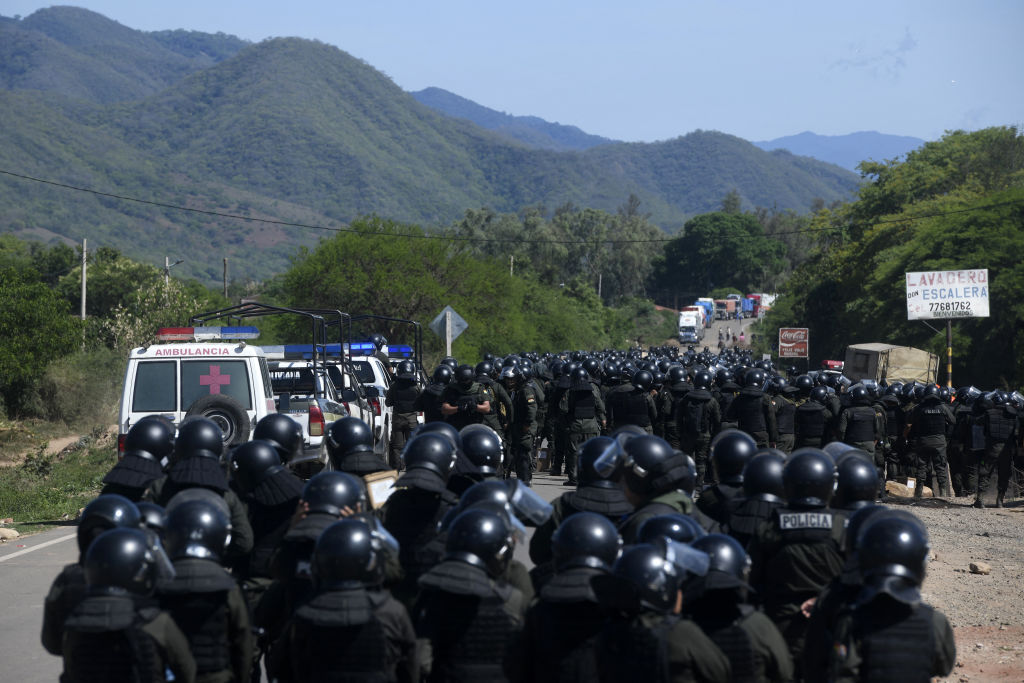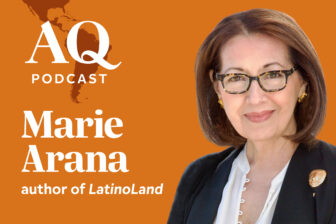LA PAZ — The power struggle between President Luis Arce and former President Evo Morales within Bolivia’s ruling party Movimiento al Socialismo (MAS) has thrust the nation into high-stakes turmoil.
In October, the country saw prolonged road blockades cutting off transport between its three main cities, widespread use of dynamite to fend off riot police, and the occupation of three military posts, with officers and soldiers temporarily detained. Morales also blames Arce for a reported assassination attempt against him, which the government denies.
Morales, leading the move against the government run by his former protegé, demonstrated his formidable mobilization capability, but it only went so far, and in that process he has risked his longstanding leadership. At stake is control over the MAS, which will be decisive in the run-up to the August 2025 elections.
It’s clear that Morales’ influence has declined. This marks a significant shift in Bolivian politics, considering his prominence since the 1990s, whether as a leader of coca growers, a congressman, or as president. Morales held power for 14 years—an unprecedented record in Bolivia—and once enjoyed vast popularity domestically and among global progressive circles. Now, Morales’ leadership of the MAS and of the left faces a series of challenges that may create an opportunity for Bolivia’s opposition in next year’s elections.
A weakened position
The 2019 election fraud allegations ignited a wave of protests against Morales, leading to his resignation and initial exile to Mexico, followed by Argentina. A mismanaged transitional government after his resignation, compounded by the pandemic’s devastating economic impact, paved the way for the MAS party to return to power in 2020 with Luis Arce, his former finance minister of 12 years, at the helm.
Upon his return from Argentina, Morales attempted to assert influence over Arce’s administration, igniting enormous friction between them. What began as a close alliance has since devolved into a bitter rivalry marked by extreme mutual accusations.
In November this year, amid the protests, it became clear that Morales’ show of force had weakened, as the police, supported by the army, managed to dismantle two critical blockade points, reestablishing the flow of goods and people between Bolivia’s eastern and western regions. In one location, uniformed forces met no resistance from protesters. The roadblocks continue in the Chapare region, the heart of the country’s coca-producing area and Morales’ main stronghold.
Morales now appears weakened, turning to a hunger strike in an attempt to “pressure” the government into establishing a dialogue on two fronts: one focused on economic recovery measures, and another addressing his disqualification and legal accusations — Morales also orchestrated these blockades to push for his two main demands: reversing his disqualification from next year’s elections and halting the charges he faces over allegations of child trafficking and statutory rape, which he has denied.
After the government rejected his request, he backtracked, stating that he would end the strike once detainees from recent protests were released. Finally, on Wednesday the 6th, he agreed to temporarily suspend the blockades.
Failing to achieve his two primary goals has exposed Morales to a position of vulnerability. He has also alienated key sectors such as transporters, merchants, and exporters. Many affected by the blockades belong to lower-income groups, who traditionally form Morales’ base of support.
An opportunity for the opposition
Morales’ current weakened position, internal divisions within MAS, and Arce’s very low popularity open the door for liberal and conservative forces, potentially allowing them a viable path to victory in the 2025 elections after two decades in opposition.
However, any non-MAS government would face formidable challenges. The economy is in shambles, with poverty rates similar to those of the early 1990s, an over 50% disparity between official and parallel dollar rates, and strict restrictions on dollar savings withdrawals.
Once an exporter of hydrocarbons, Bolivia is now a net importer, with fuel heavily subsidized and sold at a third of neighboring countries’ prices. The productive sector is deeply weakened, and Bolivia’s environmental crisis is dire, with deforestation ranking as the third worst globally, after the Brazil and the Democratic Republic of Congo.
The state’s chronic revenue shortfall has led to a persistent fuel deficit over the past year, resulting in long lines of vehicles and trucks at gas and diesel stations as the government struggles to meet import demands.
Some analysts argue that the next administration’s first steps should be to devalue the boliviano and raise gasoline prices, two politically sensitive measures that are likely to provoke widespread resistance. Given Bolivia’s history of mass protests, the situation appears daunting.
Even so, the MAS crisis and Morales’ waning popularity open up the possibility of a political shift that could bolster Bolivia’s beleaguered democracy, initiate judicial reforms, and address urgent environmental issues.









